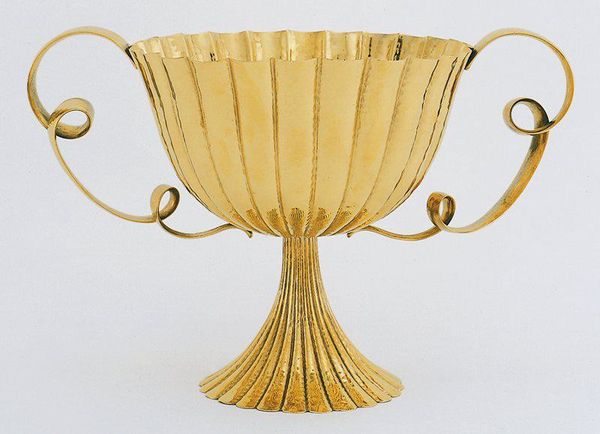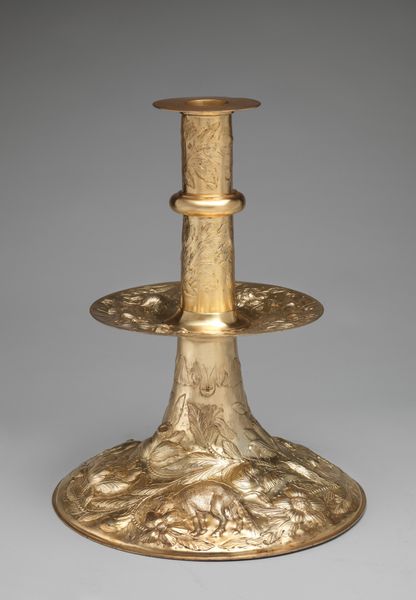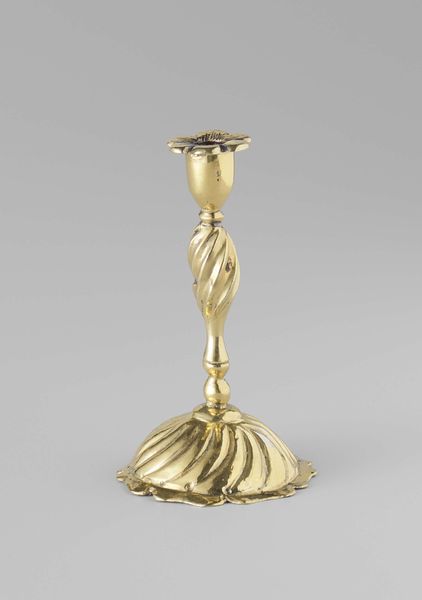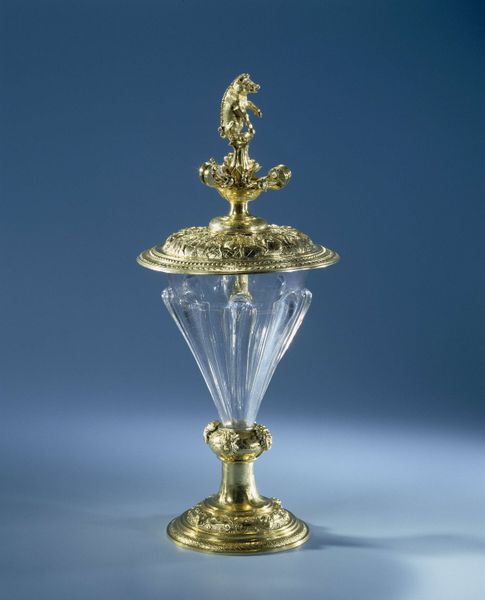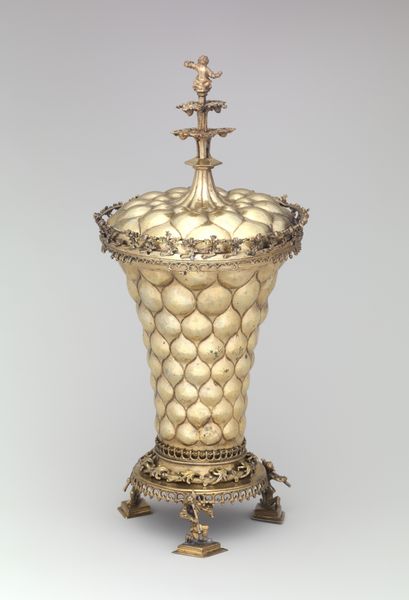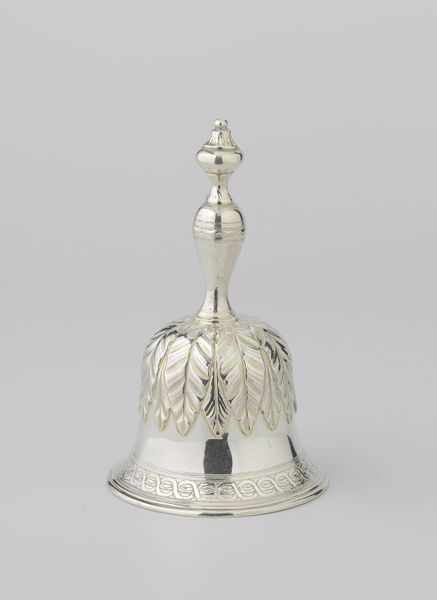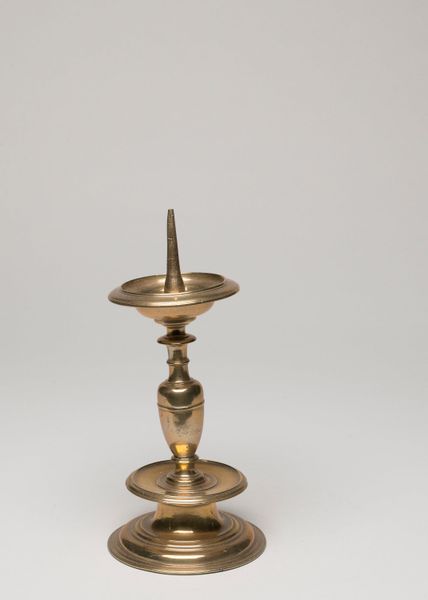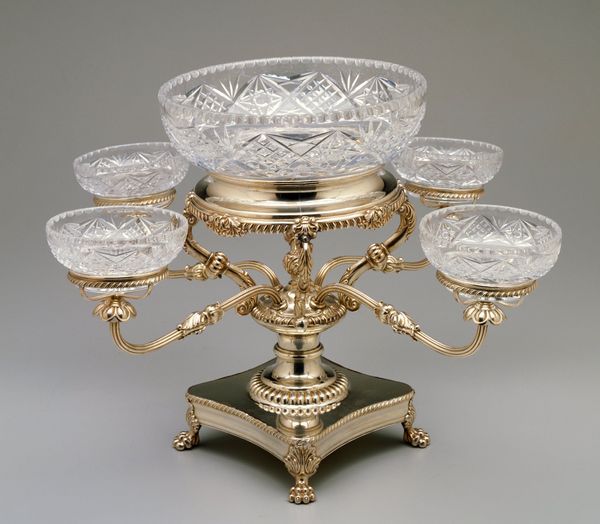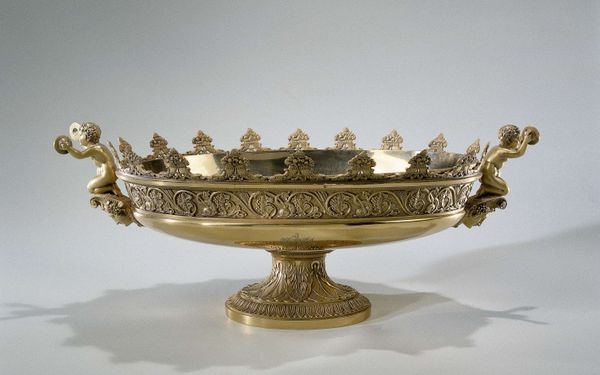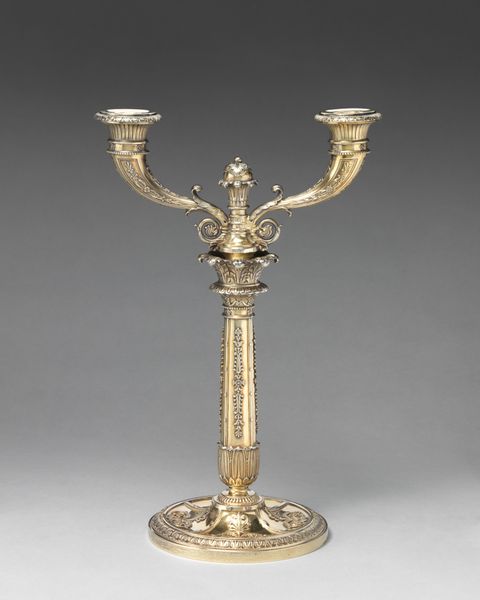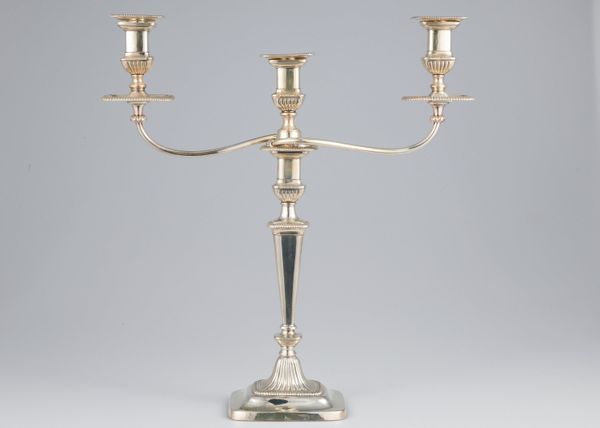
brass, metal, sculpture
#
art-nouveau
#
brass
#
metal
#
geometric
#
sculpture
#
ceramic
#
decorative-art
Dimensions: 16 1/2 x 27 x 9 in. (41.91 x 68.58 x 22.86 cm)
Copyright: No Known Copyright
This candelabrum was created by Bruno Paul, a German artist who explored new ideas about design. Paul was an influential figure in the German Arts and Crafts movement of the late 19th and early 20th centuries. Thinkers like Paul believed that industrialization was causing a decline in the quality of design, and they looked to pre-industrial societies for inspiration. The German Arts and Crafts movement saw the applied arts as a way to improve everyday life, believing that art could and should be both beautiful and functional. Here, the candelabrum is made from brass, a relatively cheap and easy-to-work-with material, which made it accessible to a wide range of people. The simple, geometric design reflects the functionalist spirit of the Arts and Crafts movement. To fully appreciate the candelabrum, we might look at the design reform movements of the time, and how these attempted to respond to the changing social and economic conditions of early 20th-century Europe.
Comments
minneapolisinstituteofart over 1 year ago
⋮
The ceremonial appearance and considerable size of this twelve-armed candelabrum make it among the most compelling of German Art Nouveau (Jugendstil) metalworks. The arms swivel around the central shaft forming a three-dimensional tree form or, as here, may be arranged with the arms in a row suggesting a stylized peacock. Designed in 1901, it was being sold in several sizes by the Vereinigte Werkstätte until at least 1914. To date, few versions of this candelabrum have been recorded.
Join the conversation
Join millions of artists and users on Artera today and experience the ultimate creative platform.
